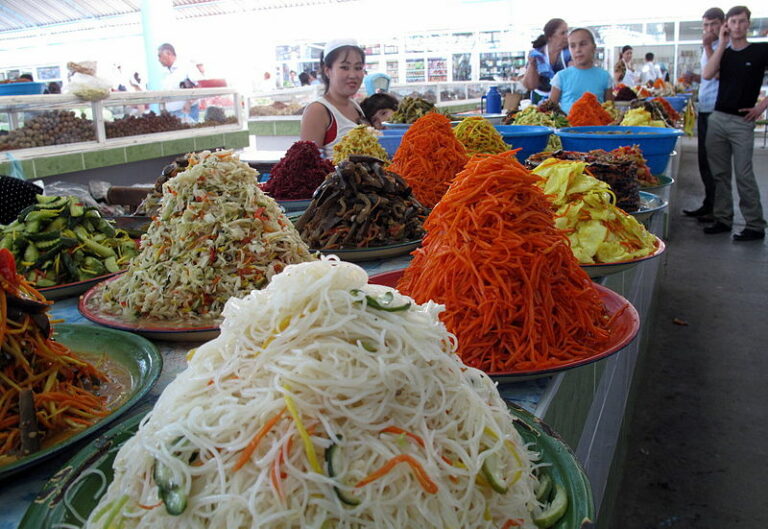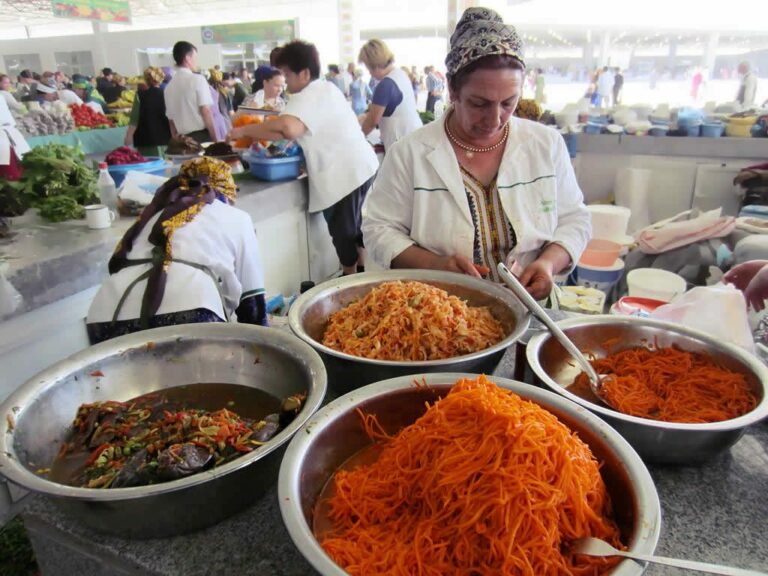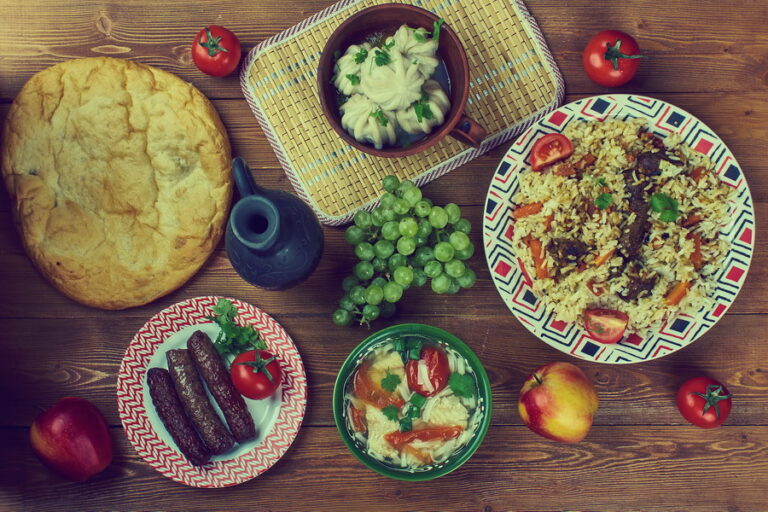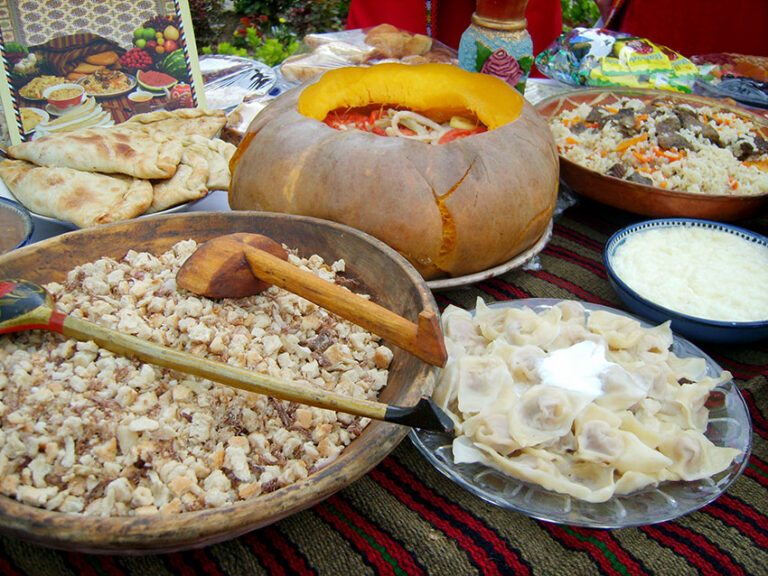Introduction: An Overview of Turkmen Cuisine
Turkmen cuisine is a reflection of the rich cultural history of the country. It is characterized by the use of simple ingredients and cooking techniques that have been passed down from generation to generation. The cuisine is centered around meat, dairy products, and bread, which are staples in the Turkmen diet.
Regional Differences in Turkmen Cuisine
While Turkmen cuisine is known for its simplicity, there are regional variations in the dishes that are prepared. These differences are based on the availability of ingredients, cultural traditions, and historical influences. The four main regions of Turkmenistan are Khorazm in the west, Mary in the east, Balkan in the south, and Dashoguz in the north. Each of these regions has its own unique style of cooking, which is reflected in the local cuisine.
The Western Region: Khorazm
Khorazm is known for its hearty and filling dishes, which are influenced by the Uzbek cuisine. The region is known for its use of lamb, beef, and chicken in their dishes. One of the most popular dishes in Khorazm is “pechchyk,” which is a type of pilaf made with lamb or beef and rice. Another popular dish is “chuchvara,” which are small dumplings filled with meat and served in a hot broth.
The Eastern Region: Mary
Mary is known for its use of herbs and vegetables in their dishes. The region is known for its use of mutton and goat meat in their dishes. One of the most popular dishes in Mary is “gövurma,” which is a type of stew made with mutton, onions, and potatoes. Another popular dish is “tukhurma,” which is a type of pilaf made with dates and meat.
The Southern Region: Balkan
Balkan is known for its seafood dishes and rice-based dishes. The region is known for its use of fish, crab, and other seafood in their dishes. One of the most popular dishes in Balkan is “balyk shashlyk,” which is a type of grilled fish. Another popular dish is “plov,” which is a type of pilaf made with rice, vegetables, and meat.
The Northern Region: Dashoguz
Dashoguz is known for its use of dairy products in their dishes. The region is known for its use of sheep and goat milk in their dishes. One of the most popular dishes in Dashoguz is “gatyk,” which is a type of thick yogurt that is mixed with cooked rice and served with meat. Another popular dish is “samsa,” which is a type of pastry filled with meat and onions.
Conclusion
In conclusion, there are regional variations in Turkmen cuisine that have been shaped by historical, cultural, and geographical factors. Each region has its own unique style of cooking, which is reflected in the local cuisine. Whether you are in the west, east, south, or north of Turkmenistan, you are sure to find delicious and flavorful dishes that are a testament to the richness of the country’s culinary heritage.






